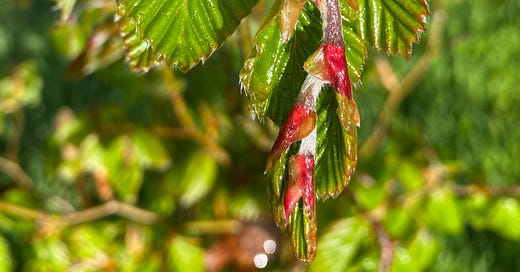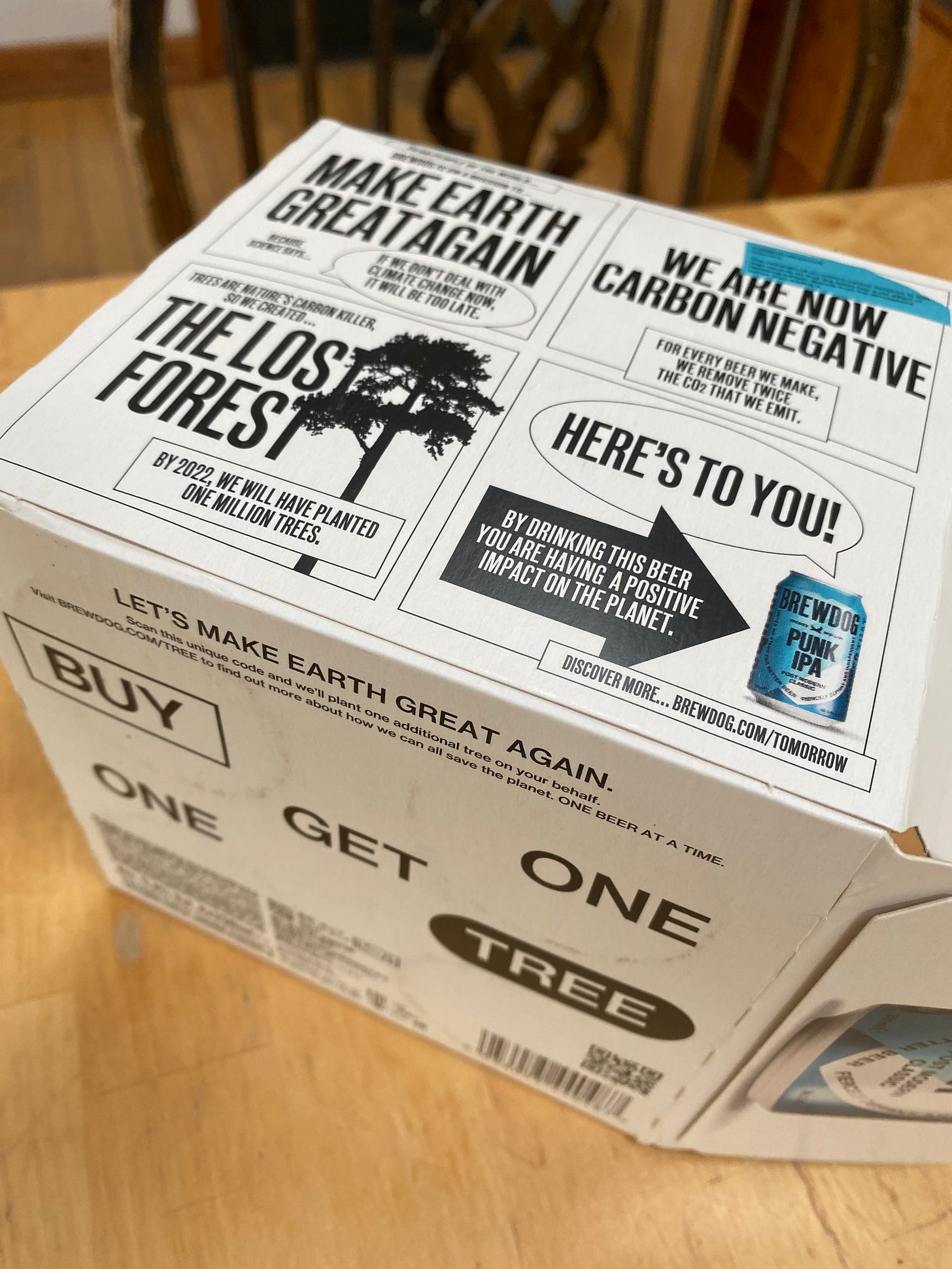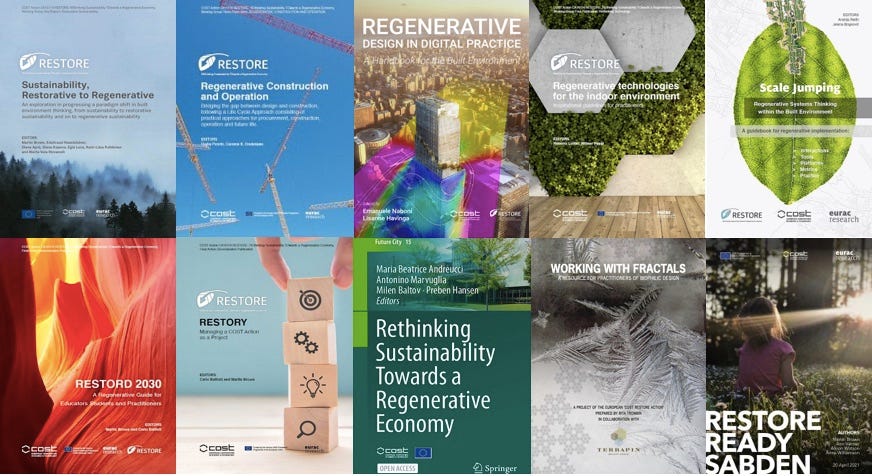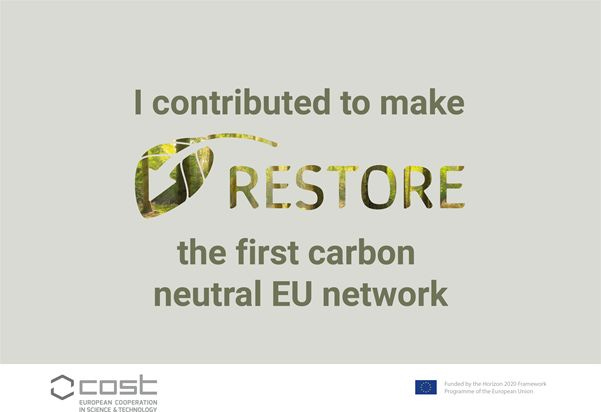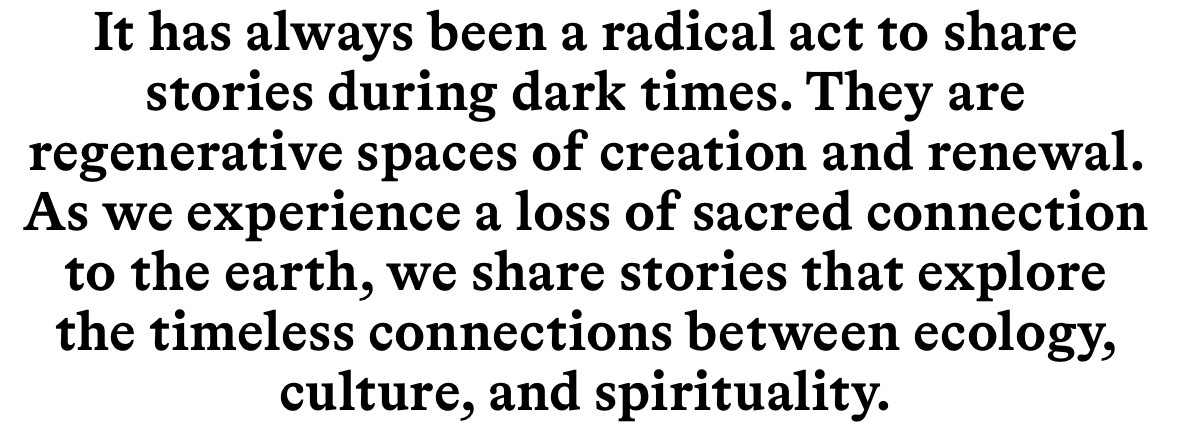Regen Notes #11
Dylan, Regenerative, Restore, Body of Knowledge, Nature, Eco-Awakening, Mother Tree, Packaging, COP26 and Zoom Regenerative.
Welcome to Regen Notes, your fortnightly newsletter of regenerative news, stories and more, with a sideways focus on the built environment, curated by Martin Brown. Regen Notes is a companion to Zoom Regenerative.
Bob Dylan, A Hard Rains Gonna Fall
Bob Dylan turned 80 this week, and whether we have sought out Dylan tracks, or they have sought us, they are probably somewhere in most peoples playlists. When aged just 21 back in 1962 he wrote and recorded what is probably one of the most well known of environmentalist songs, with lines and images that still haunt 60 years on:
Oh, what did you see, my blue-eyed son?
And what did you see, my darling young one?
I saw a newborn baby with wild wolves all around it
I saw a highway of diamonds with nobody on it
I saw a black branch with blood that kept drippin'
I saw a room full of men with their hammers a-bleedin'
I saw a white ladder all covered with water
I saw ten thousand talkers whose tongues were all broken
I saw guns and sharp swords in the hands of young children
And it's a hard, it's a hard, it's a hard, and it's a hard
It's a hard rain's a-gonna fall
It was the same year that Rachel Carson wrote in Silent Spring “Only within the moment of time represented by the present century has one species, man, acquired significant power to alter the nature of the world.”
When Dylan was awarded the Nobel Prize for Literature in 2016, his friend Patti Smith sung this song in a powerful, emotional rendering. (This is one of my favourite performances as it shows how to deal with nervousness when forgetting lines at a high-pressure award ceremony). “I chose ‘A Hard Rain’ because it is one of his most beautiful songs. It combines his Rimbaudian mastery of language with a deep understanding of the causes of suffering and ultimately human resilience” Patti Smith
We’re Going to Carry that Weight A Long Time
Staying on a music theme, the title of David Farrier’s article in Emergence Magazine, taken from a Beatles ear-worm tune, reflects on the immense burden of materials that mark our place on Earth. All houses have memories …

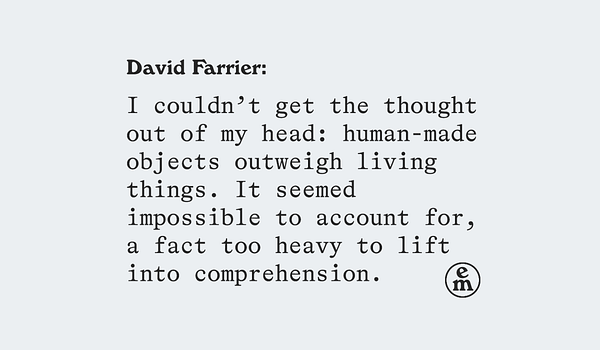
Regenerative Rising
Change is coming. We are on the cusp of an impactful new era that harnesses regenerative practices, with an unparalleled opportunity to reshape the way we live, learn, work and do business for the better.
“In the wake of the pandemic, a growing consensus is emerging that the current system is failing people and the planet. Economic and social inequality is widening, driving the unrest. Meanwhile, human impacts have led us to a climate emergency and a biodiversity crisis.” states Wunderman Thompson recently published “Regeneration Rising: Sustainability Futures,” ... a new report that unpacks the emerging and future trends in sustainability. And whilst all looks good but we need to prepare for Regen-wash as regenerative becomes the new sustainability.
Featured in Regeneration Rising is BrewDog with claims to be the world’s first carbon-negative brewery, carving out a reputation as a real climate leader. The Scottish B Corp has worked with world-leading carbon impact expert Mike Berners-Lee to calculate its carbon impact and now double offsets its emissions, including its supply chain. It has also purchased land in Scotland to create a BrewDog Forest of 1 million trees and restored peatland. Alongside these initiatives, it is working on a 24-month plan to drive down its operational footprint and become a zero-waste business.
How would double offsets (including those in supply chains) work in the built environment?
RESTORE
At Restore we are immensely proud of the Regenerative Body of Knowledge created through the RESTORE Cost Action. This rBOK includes many thought-leading publications, videos, presentations and more, covering the built environment spectrum from changing mindsets and system thinking, to design, construction, operations and internal environments. along with RESTORY, the story of RESTORE and RESTORD a regenerative guide for educators, students and practitioners.
In addition, RESTORE has declared as the 1st (and only) carbon net positive European research project and network. In line with the RESTORE regenerative ethos, principles, and vision of doing more good, and not just seeking to be less bad, Restore set a mission and strategy of achieving carbon neutrality.
Nature protection and recovery
The UK Government’s plans to protect and restore nature were announced in a speech by George Eustice, Minister for the Environment, cover important issues, from restoring peatlands, banning the sale of peat and planting woodlands to protecting our habitats and species.
Reviews worth reading include Tom Butterworth’s, (Deputy Head of Ecology and Technical Director for Natural Capital and Biodiversity at WSP in the UK) and Rewilding Britain’s from policy and campaigns coordinator Guy Shrubsole
From a design and construction perspective, we now await the strengthening of legislation and guidance on nature protection and restoration.
Nature-Based Solutions
Historically the built environment and architecture has had an uneasy, even arrogant relationship towards nature, but are we now entering a new phase in which that relationship is going to be the crucial question?
A new report by the British Ecological Society details how nature can be a powerful ally in responding to the twin crises of biodiversity loss and climate change.
“The report offers, for the first time, a complete assessment of the potential of nature-based solutions (NbS) to mitigate climate change and benefit biodiversity in the UK. Incorporating contributions from over 100 experts, the comprehensive evaluation of the available evidence details the strengths, limitations and trade-offs of NbS in different habitats across the UK”.
Eco-Awakening
“Findings from a new eye-opening report by the Economist Intelligence Unit (EIU) commissioned by WWF, spanning 54 countries that hold 80% of the world’s population, reveal that we’re entering a new era of change - perhaps the most important era for the future of humanity and our planet.”
On Twitter alone, the number of posts related to nature loss and biodiversity has increased by 65% since 2016. In the United Kingdom, such Tweets grew by an astounding 206% - from 864,000 in 2016 to 2.6 million in 2020.
However, the number of nature loss and biodiversity-related Tweets grew especially in emerging markets: an increase of 38% across Asia, 53% in Sub-Saharan Africa, 136% in Latin America (between 2016-2019) and a staggering 550% increase in India from 230,020 in 2016 to 1.5 million in 2020.
Finding the Mother Tree
I am currently reading the wonderful recent memoir from Suzanne Simard, a personal discovery and scientific exploration, and not at all surprised to hear it will be getting the Hollywood treatment for the big screen soon. With forest hikes, bears, rodeos, presenting controversial presentations at conferences to amazing ecology and science - it has it all.
In Finding the Mother Tree, Suzanne Simard demonstrates how storytelling can ignite something science alone cannot. Guardian Review
Mindful Moment

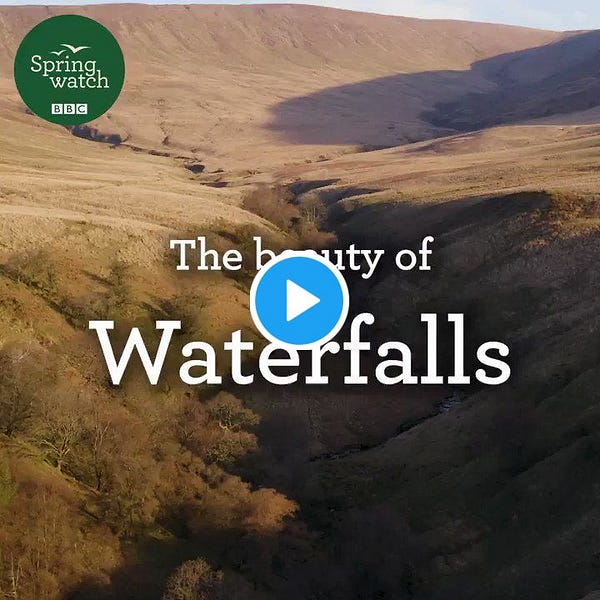
Natures Recipe Book
For billions of years, terrestrial and marine habitats have thrived in producing vast quantities of materials, all without landfill or waste. It’s time we took notes.
The wonderful Martiom library features open-source recipes for materials made from abundant biomass that can be locally sourced. Recipes use green chemistry methods and nutrients such as sugars, proteins, fats and common minerals, making them biodegradable by design.
Plastic, Packaging, Recycling
Greenpeace, whose plastic video has gone viral on Twitter, is calling for a ban on all plastic waste exports.


Extended Producer Responsibility
The UK Government is now committed to introducing packaging Extended Producer Responsibility following further consultation. The second consultation, now open, focuses on specific policy proposals for its introduction.
Recycling
And a reminder that recycling is not the answer, being only halfway down the waste hierarchy off avoiding, reducing, reusing ... Recycling has a part to play in solutions to the plastic problem, but it cannot have the starring role.
COP26
The Built Environment Summit, a report and conference to be held virtually and in London the week before COP26, will be hosted by the RIBA in partnership with Architects Declare. The aim of which is to “embolden governments to support and work with the international built environment industry to decarbonise construction”.
There is an open call for climate action research (closes 01 June) to prepare a report to the world’s governments to provide the necessary support and legislation to accelerate the systemic change in our industry to stay within the 1.5°C carbon budget.
There must be no more delays, or excuses.
Zoom Regenerative
Zoom Regen #32 on the 18th of May welcomed Daniel Raven Ellison sharing insights into his work with the National Park Cities movement and the recently launched Slow Ways project. Check out the links, recordings from ZR#32 here
Our next Zoom Regenerative (#33) on the 1st June will feature Ann Vanner sharing insights into healthy homes, with a focus on the first 1000 days of life as part of the Thrive initiative at UCLAN, Lancashire UK. ZR33 will also reveal exciting collective ‘unconference’ plans for future ‘unsessions’ and happenings, along with news on upcoming regenerative events around the globe.

